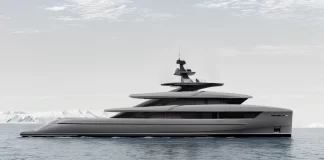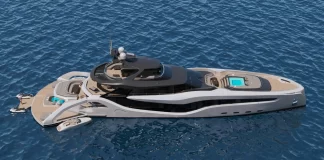The race to find the green propulsion of the future has dominated the yachting industry for the past few years, yet a universal solution has yet to emerge. Could nuclear power be the answer? One of the featured panellists, Øyvind Gjerde Kamsvåg, chief designer at Norwegian shipbuilder Ulstein Group, will unveil the thinking behind his revolutionary nuclear yacht concept.
As the search for sustainable propulsion intensifies, Ulstein Group has spearheaded discussions around nuclear power as a viable solution. “We started talking about it as far back as 2006,” says Kamsvåg. “While we recognized both its potential and its challenges, we knew that nuclear power would be an extremely tough sell.”

The Limitations of Alternative Fuels
When assessing green fuels, Kamsvåg believes that every option has its drawbacks, particularly hydrogen and ammonia. “How can you ensure hydrogen is produced in an environmentally friendly way? Where do you find green ammonia? How much energy is required to produce enough hydrogen and ammonia to power a fleet? Hydrogen storage remains a major hurdle, as you currently need a tank almost the size of the ship itself to achieve a viable range,” he explains. While alternative fuels present challenges, Kamsvåg believes that nuclear power holds greater advantages.
In 2021, Ulstein Group was involved in designing small expedition cruise vessels operating between Ushuaia, the Drake Passage, and Antarctica. Limited access to sustainable fuels like HVO in such remote regions prompted them to consider nuclear power more seriously. “We wanted to see if it was possible to introduce a new energy infrastructure that could improve sustainability in the cruise industry,” says Kamsvåg.
This led to the concept of Thor, a 149-meter nuclear-powered vessel designed to function as a mobile power and charging station in remote locations like Antarctica. With the ability to generate clean energy, Thor could serve as an enabler for more sustainable expedition vessels, eliminating the reliance on fossil fuels.

“Thor will not only provide power,” Kamsvåg explains, “but it will also have research, replenishment, and rescue capabilities, making it an essential asset for global maritime operations.” By creating a single nuclear-powered vessel, Ulstein hopes to encourage the development of electric expedition ships that can recharge from Thor, thus reducing their environmental footprint.
Is Yachting Ready for Nuclear Propulsion?
Ulstein Group envisions equipping Thor with a nuclear reactor capable of generating 20 MW of clean electricity. While traditional nuclear reactors are large-scale installations producing gigawatts of power, the challenge lies in developing a compact reactor suitable for maritime applications.
Thor and its companion vessel, Sif, could house various small next-generation reactors, such as molten salt, fast neutron, or gas-cooled reactors. The preferred choice for Ulstein’s concept is thorium over conventional uranium or plutonium, as it presents a reduced safety risk and could contribute to a new energy economy in Norway, where thorium deposits are abundant.
The adoption of nuclear power in yachting remains a topic of debate, yet Ulstein’s Thor concept highlights its potential to revolutionize sustainable maritime travel. As discussions continue, the industry edges closer to answering the question: Is nuclear propulsion the future of yachting?














